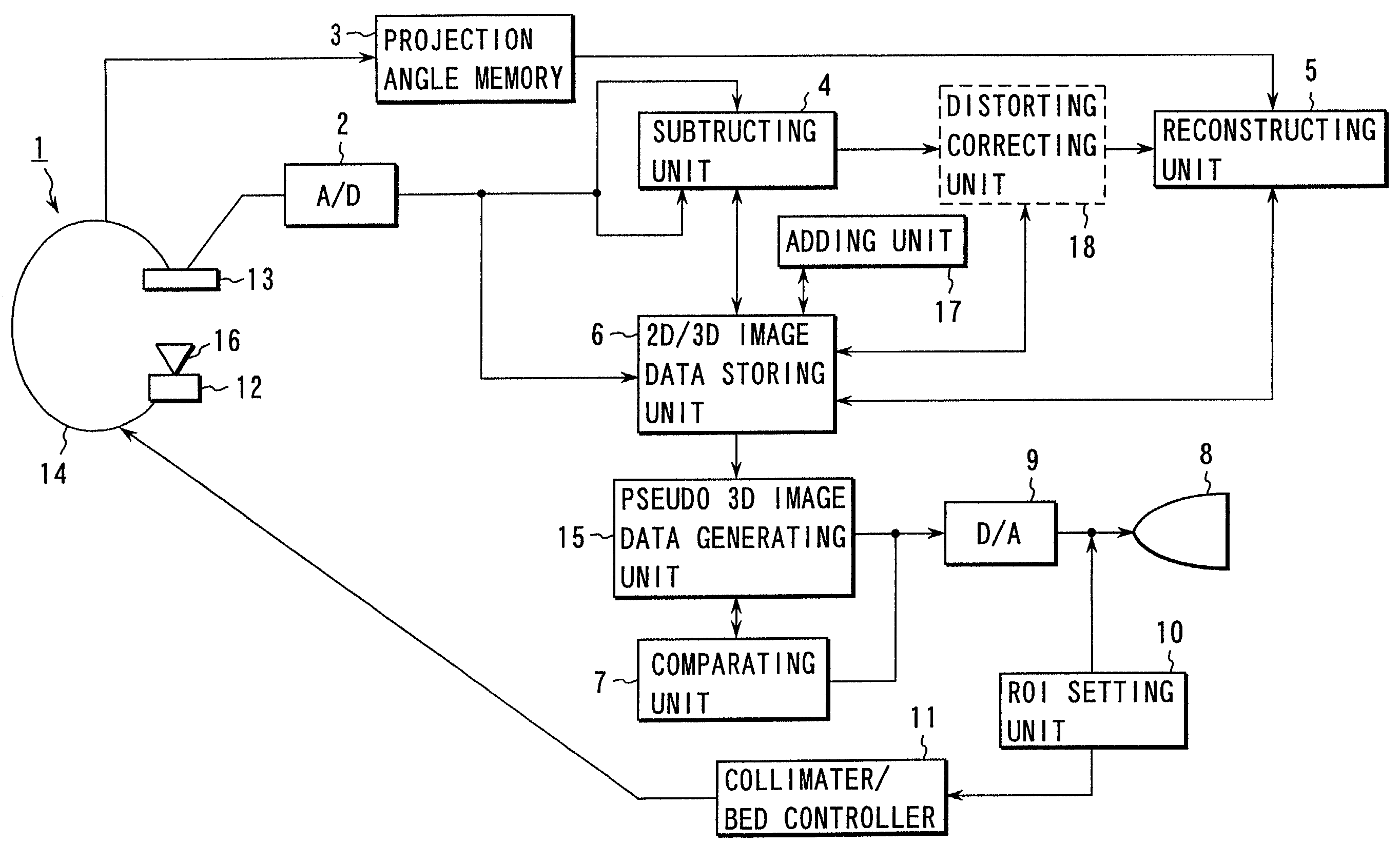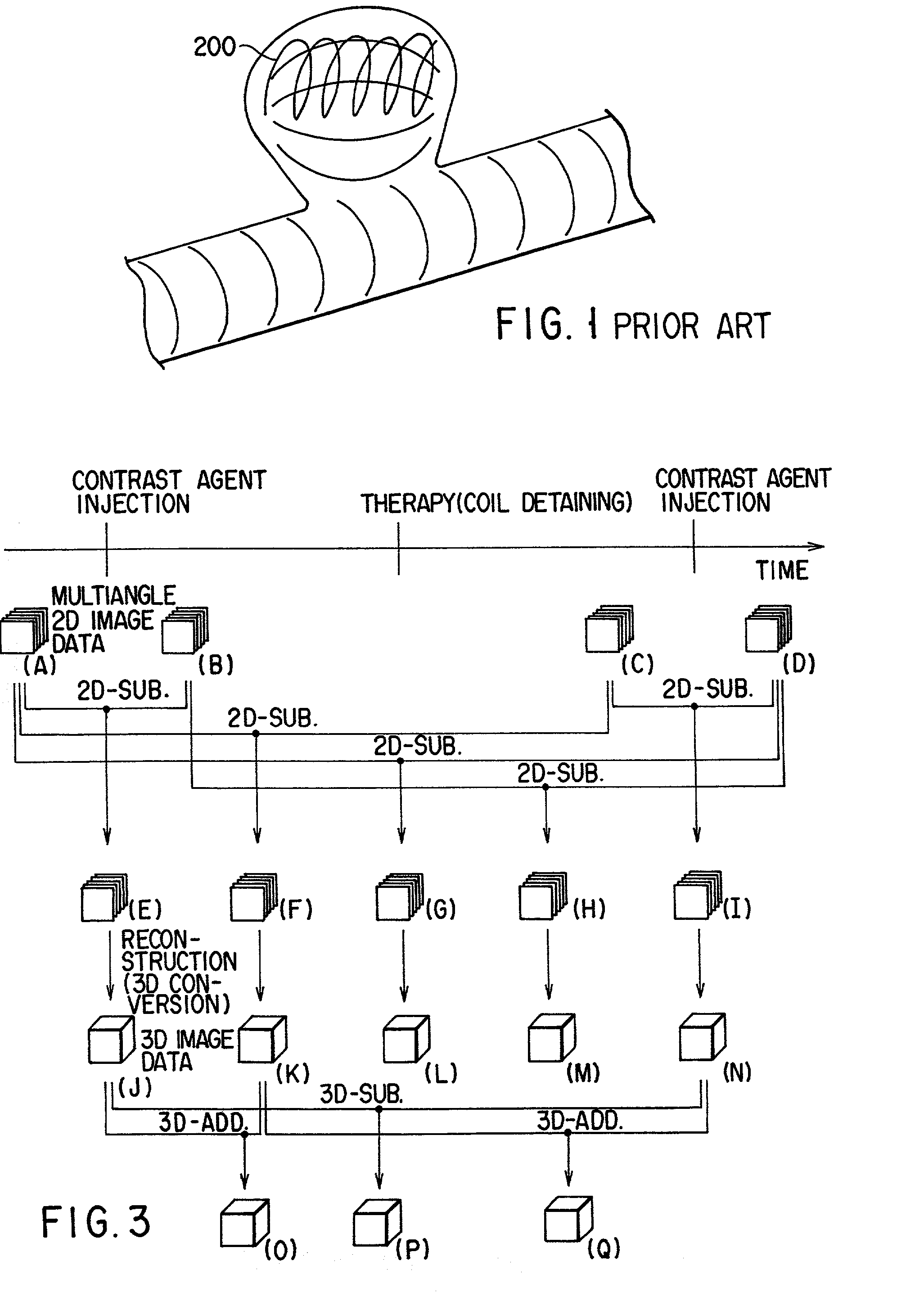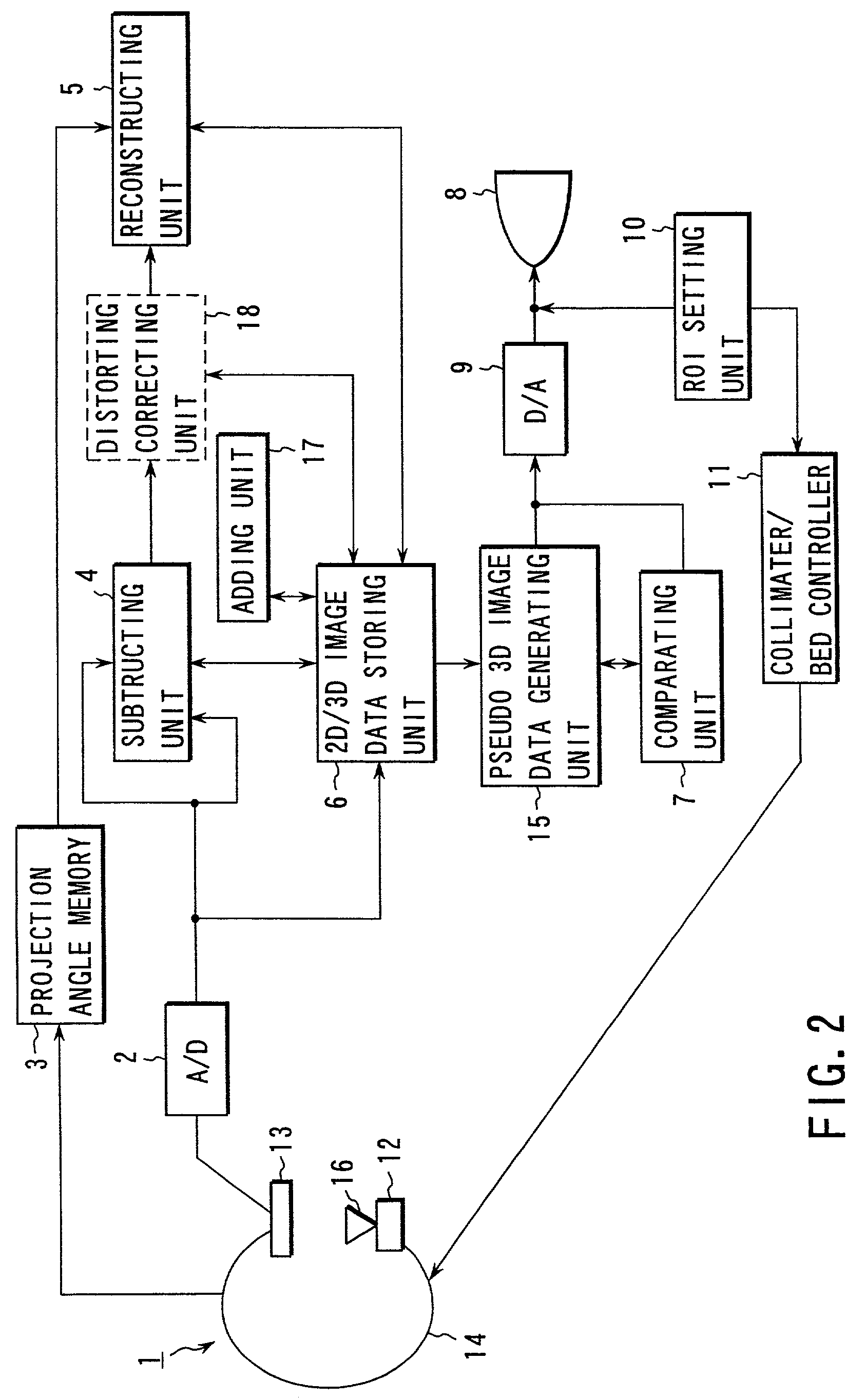X-ray diagnosis apparatus
a technology of x-ray diagnosis and x-ray, which is applied in the field of medical image processing apparatus, can solve the problems of taking a long time to move a catheter to a target, not being able to grasp the complicated structure of a blood vessel, and not being able to find optimal projection angles
- Summary
- Abstract
- Description
- Claims
- Application Information
AI Technical Summary
Benefits of technology
Problems solved by technology
Method used
Image
Examples
first embodiment
[0031]As shown in FIG. 2, the X-ray diagnosis apparatus according to the first embodiment has a radiography unit 1. The radiography unit 1 includes an arcuated arm 14 capable of rotating about three axes including the body axis of a subject, an X-ray tube 12 mounted on one end of the arcuated arm 14, an X-ray collimator 16 mounted in the X-ray window of the X-ray tube 12, and a camera system 13 mounted on the other end of the arcuated arm 14. For the sake of descriptive convenience, a rotational angle about the body axis of the subject corresponds to a projection angle. This projection angle data is stored in a projection angle memory 3. The camera system 13 is comprised of an image intensifier, optical system, and TV camera. The camera system 13 may be a planar X-ray detector constituted by solid image sensing elements, each having a scintillator and photodiode, arrayed in the form of a matrix.
[0032]An A / D converter 2 converts an analog video signal output from the camera system 13...
second embodiment
[Modification of Second Embodiment]
[0093]In the second embodiment described above, a road map is generated every time the projection angle changes. In a region where a change in projection angle (translation) is small, a road map may be translated in accordance with a change in projection angle. In addition, in a region where a change in projection angle is small, since a change in load map with a change in angle is small as compared with a change in road map with position movement, a change in projection angle can be properly coped with to a certain degree without changing a road map. A road map is therefore computed and generated again only when the projection position or angle at which the previous road map was generated changes beyond a predetermined range. In a region where a change in projection position or angle is small, a change in projection angle can be properly coped with by the previous road map without generating any new road map.
third embodiment
[0094]An X-ray diagnosis apparatus according to the third embodiment of the present invention will be described next. The same reference numerals as in the first and second embodiments denote the same parts in the third embodiment, and a detailed description thereof will be omitted. When a road map is generated according to the procedure in the second embodiment, blood vessels overlap depending on the projection angle. This may make it difficult to identify a target blood vessel structure. The third embodiment is made to solve this problem.
[0095]FIG. 12 shows the apparatus arrangement of the third embodiment, in which a pseudo 3D image data generating unit 50 extracts a target region from the 3D image data stored in an image memory 6 by the above simple threshold processing, region-growing method, or the like. The surface structure is then shaded. The resultant data is converted into an analog signal by D / A converter 52 to be displayed on a displaying unit 53. By observing this pseu...
PUM
 Login to View More
Login to View More Abstract
Description
Claims
Application Information
 Login to View More
Login to View More - R&D
- Intellectual Property
- Life Sciences
- Materials
- Tech Scout
- Unparalleled Data Quality
- Higher Quality Content
- 60% Fewer Hallucinations
Browse by: Latest US Patents, China's latest patents, Technical Efficacy Thesaurus, Application Domain, Technology Topic, Popular Technical Reports.
© 2025 PatSnap. All rights reserved.Legal|Privacy policy|Modern Slavery Act Transparency Statement|Sitemap|About US| Contact US: help@patsnap.com



